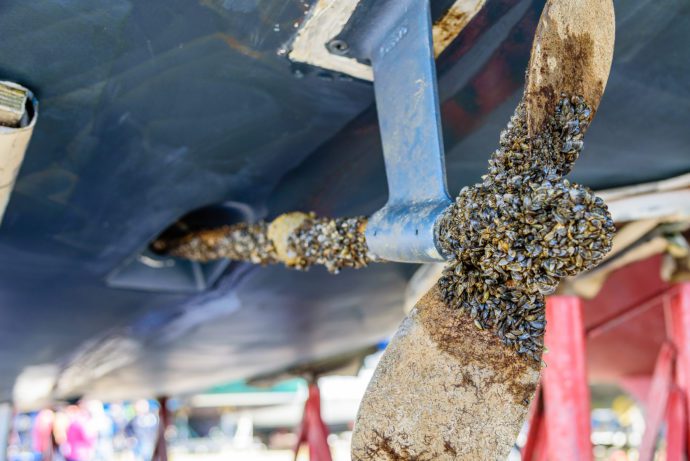
From small lakes to large rivers and reservoirs, Washington state boasts some of the world’s most beautiful and pristine waterways. But below the surface, there can be a menagerie of invasive plants, fish and mussels (to name a few) that threaten our waterways and fragile ecosystems.
Some aquatic invasive species, like the zebra and quagga mussels, can wreak havoc on everything from boats to hydroelectric facilities. Zebra and quagga mussels can latch together and clog vital hydroelectric equipment such as cooling pipes and intake tunnels. They can even latch onto the turbines that turn to generate power. The damage that these species can cause is not only expensive to fix and requires hours of labor to address; it can also reduce the amount of power generated and the amount of energy the utility can sell.
Seattle City Light has established protocols at its facilities for the proper cleaning and inspection of its vessels and equipment that enter the water to reduce the risk of the introduction of invasive species which can be hard to see with the naked eye. The threat of invasive species is especially prevalent at the Boundary Hydroelectric Project in northeastern Washington, which generates a significant amount of the City Light’s power, due to its proximity to existing aquatic invasive species. While there have been minimal invasive species observed at the Skagit Hydroelectric Project, City Light wants to minimize the threat and potential impact of these species.
“Washington’s precious waterways are vulnerable to invasive species,” said City Light Strategic Advisor, Dave Beedle. “City Light and other utilities are taking preventive measures to help protect their facilities and the valuable ecosystems they operate in. That said, we need everyone to do their part to help keep these pesky species from spreading.”
You may be wondering what you can do to help prevent these invasive species from infiltrating our waterways. Well, if you are recreating in or on the water using any kind of gear/equipment or watercraft, Dave has a few tips for you.
CLEAN
When leaving the water, inspect your boat, trailer and gear carefully. Clean anything that touched the water by removing all visible plants, algae, animals, and mud.
DRAIN
Drain any accumulated water from your boat and gear (including bait, bilge live or transom wells) before leaving the water access point. Remove all boat plugs.
DRY
Dry your equipment, including bilge and live well areas, and wait 48 hours before using it in a different body of water
To learn more about all types of invasive species in Washington state, visit wdfw.wa.gov/species-habitats/invasive and invasivespecies.wa.gov/. We also have a brochure with more information.
